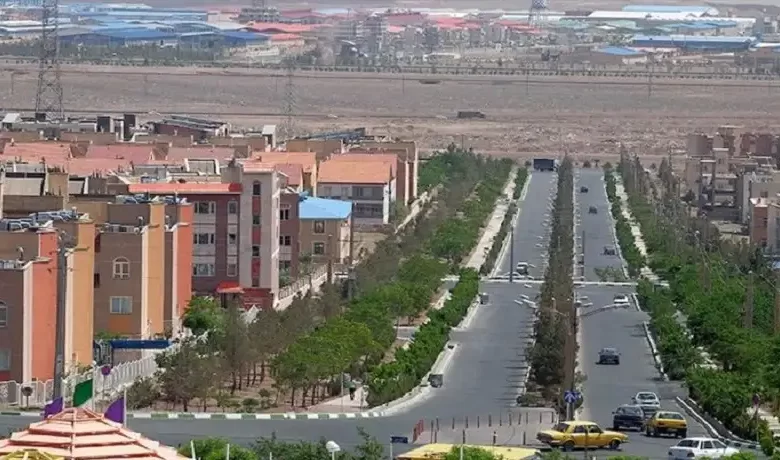Koch Bozor from Tehran/ Housing inflation has sounded the alarm of the popularity of Kaparnashi! – Tejarat News

According to Tejarat News, inflation is the main player in the housing market. According to experts, the unbridled growth of real estate prices, especially in the metropolis of Tehran, has brought the housing market to an alarming state and has raised the alarm of the prevalence of squatting, semi-squatting and living in informal settlements.
Every wave of price increase leads some people to the less-efficient areas of the city, and people have to lower their expectations of the quality of the shelter they live in every time.
The current prices make the immigrants who come to Tehran for the sake of prosperity and improvement of work and economic situation prefer to return to their cities or settle in the suburbs of Tehran despite the problems ahead.
The severity of the increase in housing and rental prices, especially since the second half of 1401, has raised the alarm of the reverse migration of the residents of Tehran and has led them to the suburbs of this metropolis.
Increasing migration to the outskirts of Tehran
Baitullah Satarian, a member of the academic staff of Tehran University and an expert in housing economics, previously stated that Tehran has an annual increase of 4 to 5 percent in marginalization, and this issue makes the area of these cities equal to Tehran itself after 20 years.
Tejarat News has scrutinized this issue in a conversation with housing and urban sociology experts and investigated the mechanism of this great migration.
Baitullah Satarian, an expert on the housing market, said: “Migration in big cities and medium cities takes place for various reasons. In big cities, due to the pressure in the housing market, people who live in a neighborhood can no longer continue living in the same place the following year and have to be pushed to a smaller space or to the outskirts of the city, and in some cases, they find themselves in informal settlements. They bring.”
He added: “This phenomenon also exists in middle cities, and because people can no longer afford housing, they settle in the outskirts of the city or choose villages where the economy has weakened or disappeared.”
Satarian added: “Some of them also go to smaller cities where the economic situation is not suitable or migrate to bigger cities where they also have to live on the outskirts of the city; As it was said, this phenomenon manifests itself in acute conditions in the form of capriciousness or quasi-capericism.”
This housing economics expert said about the phenomenon of marginalization in Tehran: “The annual growth of marginalization in Tehran is between four and five percent, and with the double percentage that will naturally be added to it in the next 20 to 25 years, the marginalization of this city will be equal to Tehran itself. . This is quite clear in the marginal areas around the cities.
The growth of dormitory towns
The cities around Tehran, due to their distance from the central city and the low facilities in the field of transportation, have practically become a dormitory for the residents of these areas. They spend many hours every day commuting to the central city, while there are no proper transportation facilities.
The rate of reverse migration has mutated in such a way that it is not far from believing that marginalization and even capriciousness will spread at a faster rate.
Mustafa Podratchi, an urban sociologist and professor at Allameh Tabatabai University, told Tejarat News: “In terms of urban planning, when economic crises are in an acute situation, people migrate from big cities to the outside of the city; “Now there are even people who have chosen Saveh Road to live.”
He continued: “Tehran in the morning and Tehran at night have several million population differences, and all these cases are due to the unfavorable housing situation. People’s places of residence are getting further away every year and eventually it will reach a stage where they will have problems if they want to come to Tehran to work.”
In this regard, Podratchi said: “If the new cities are supposed to be connected with Tehran, it should be economical to live there so that a person can easily commute to his workplace. A number of new cities have also been built that are supposed to be independent, in which case full facilities should be provided.”
This urban sociologist said: “People need shelter so they don’t stay on the street when it rains; If its facilities are also low, they accept it because it is cheaper to live in that area than in the city. For example, can an employee with his wife and children pay the current rents?
Marginalization; Disaster and social anomaly
He also explained about the consequences of this process on people’s lives: “The fact that people spend many hours a day commuting and cannot even have much interaction with their family members creates psychological pressure for them.”
University professor Allameh Tabatabai compared these conditions with a megacity like New York and said: “New York is a megacity with three shifts in it. One shift works, one rests, and the other has fun. If these three shifts want to come out at the same time, the city will explode, but this will not happen! These are structural facilities.”
He continued: “This situation is caused by planning and populist thinking. Several million people leave New York daily and return again in the evening; For them, there are highways with suitable capacity to facilitate commuting. But in the third world, the urban system is macrocephaly, so that the big series is placed on a thin body, and the urban hierarchy is not respected.”
In this connection, Satarian also stated: “Marginalization itself is a disaster and a social anomaly, and turning this factor into a norm creates a huge cost; such as organizing the area and providing services to these areas. Also, since there is not enough control, some of these areas will be a good place for people who break the law to hide. Of course, this does not mean that the marginalized people are criminals, but it means a decrease in control along with a decrease in social and welfare services.
He continued: “With this process, another problem is added to the city. “Housing is not a small category and marginalization is one of the consequences of the housing problem in the country.”
As it was said, migration to cities around a metropolis does not necessarily create critical conditions everywhere in the world; But with the current planning, facilities and economic conditions in Iran, the migration of people to the outskirts of the city, especially areas like Tehran, will have serious consequences. The most obvious of these consequences are the intensification of traffic on the highways around the city and the increase in housing prices as a result of the increase in demand and social anomalies in these areas.
Read the latest housing news on Tejaratnews housing news page.

